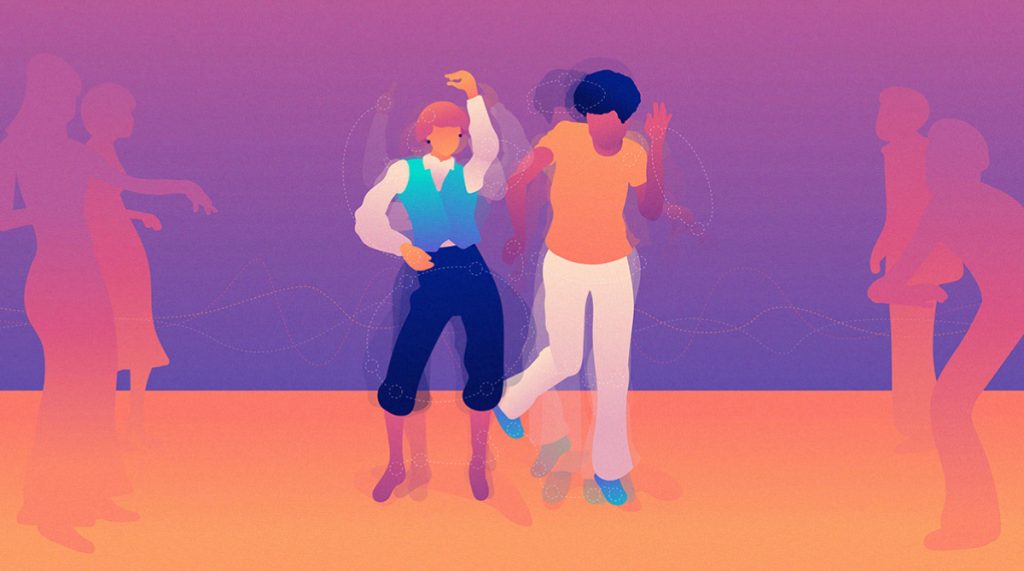This post is also available in Dutch.
Most people would rather stick to a high-intensity workout or running routine on a Sunday morning because it is efficient, less time-consuming and, at the end, it hurts—so it feels like you worked hard enough. “No pain, no gain,” right?
Dance 1 – Marathon 0
However, the National Health and Nutrition Examination Survey has concluded the opposite from a large-scale study carried out with 3626 sedentary Americans. They compared two cohorts: one carrying out low-intensity activities 2 minutes an hour each day (e.g. casual walking) and the other doing high-intensity exercises once a week (e.g running, lifting heavy weights) in addition to their baseline activity.
Surprisingly, the group practising low-intensity physical activity at regular intervals was associated with a more significant health improvement (such as a stronger cardiovascular system and a decreased risk of obesity and diabetes). This seems to argue that activating your entire body regularly during a short period of time is more beneficial than practising high-intensity sports occasionally. Indeed, mortality risk related to a sedentary lifestyle is highly dependent on how many hours you spend inactive, sitting in a chair. Thus, the take-home message would be: “Rather move often than work out once a week”.

Brainy dance
When compared to that of a non-dancer, a professional dancer’s brain shows structural and functional specificities. Indeed, Dance/Movement Therapy (DMT) provides more than physical benefits. The American Dance Therapy Association (ADTA) defines it as “the psychotherapeutic use of movement to promote emotional, social, cognitive, and physical integration of the individual, for the purpose of improving health and well-being” (An introduction to Dance/Movement Therapy, ADTA, 2016). This is an efficient method to treat many types of neurologic and psychiatric pathological symptoms.
Dance makes you think
Reproducing dance steps requires self-control. First, you need to memorize and plan a sequence of movements, then initiate simultaneous actions, all while being able to stay attuned to the music. These cognitive processes are part of so-called executive functions. Executive functions include all mental skills aimed at programming and executing actions: short-term memory, planning, focusing attention, performing multiple tasks, to name a few.
In both normal ageing and neurodegenerative diseases (e.g. Parkinson’s disease), the decline of executive functions and motor control remarkably reduces over time whenever a patient receives DMT in addition to normal medication.
Dance makes you feel
Dance is a body language where emotions become motion. It is something we spontaneously do from early childhood onwards. Our ability to dance does not depend on our skills in reproducing technical moves perfectly or performing incredible shows. From the moment you feel a rhythm that evokes movement, even the tiniest vibration, through your body: you are dancing. This embodied form of expression carries a deep social dimension and seems particularly appropriate for psychiatric disorders in which communication and expression are often affected. Therefore, when translating feelings into words becomes a challenge, an alternative is to articulate thought through gesture. Embodied therapies such as DMT have shown a beneficial effect on medication-resistant negative symptoms in both schizophrenia and Autism Spectrum Disorder.

A dance an hour a day keeps the doctor away
To recap, dance is a physical-cognitive-emotional activity that can be practised anywhere at any time, in a group or alone, following a choreography or in a freestyle manner, and is a source of pleasure. Therefore, the great proposal at all times is: Shall we dance?
Original language: English
Author: Kim Beneyton
Buddy: Christienne Damatac
Editor: Ellen Lommerse
Translator: Jill Naaijen
Editor Translation: Floortje Bouwkamp
Illustration: Tom Beneyton

Dancing is to free your mind. It makes you happy, so dance like nobody is watching